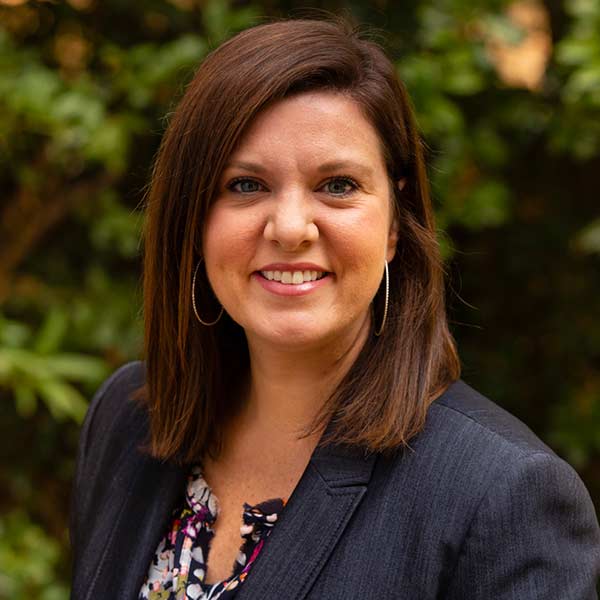Let’s take it back for a moment. It was Friday, March 13th, the last day of Spring Break for UGA students and the day when our working world completely changed. Looking back, who knew that almost three months later, we would not be back together face-to-face, walking down the hallways, sipping coffee together and catching up on our weekends, or walking across our beautiful campus to connect and collaborate with colleagues. I think it’s important to remember that time. To hold on to those images. Nothing will replace those connections with the world and with people.
Yet, here we are, in this new, virtual world. And here’s the thing, we had and still have a choice about our current reality–we embrace it or we find every reason to avoid or dismiss it.
I’m proud of the Career Center and how we have handled this transition in our office; focusing on keeping up our culture of collaboration and fun while providing career-related services to students with new technology. In a week’s time, we created a process to convert in-person appointments to Zoom, decided which programs and presentations we could continue and what we needed to cancel, pivoted how employers would connect with students in lieu of the College of Education Career Fair, created expectations for our staff in a new remote work environment, and became Microsoft Teams SUPER users. We learned a lot along the way, and I wanted to share a few of those lessons with you today.
CONTINUING OUR SERVICES TO STUDENTS
As it turns out, not all services can be replicated online, but we tried our best to continue career services for students to help them achieve career success. This continuation proved to be a bit tougher than we anticipated, but we learned a lot along the way. Below you will find a few guiding questions we used to assess our services and the feasibility of moving services online:
- What services are critical to the goal of our office and the career development of students? We decided that appointments, drop-ins, career fairs, and most of our Arch Ready programs were critical services for our students. On the flipside, we were not convinced that classroom presentations were a critical service, so we canceled all classroom presentations for the remainder of the semester. It was also very unclear how faculty would adapt instruction during this time, so we focused on services in which we had more control.
- Do we have the technology to continue these services, and if so, how will we use it? Appointments and drop-ins could be continued through Zoom Meetings. The Zoom Meeting function also allowed for breakout rooms, which were ideal for drop-in hours to continue that one-on-one, personal feel that we hoped to keep intact. While we believed our remaining career fairs were critical, we did not have the time or resources to find a vendor and convert them to a virtual event in such a short period of time. For Arch Ready Programs, we wanted a clean, professional look, so we used our GoToWebinar account to achieve quality presentations.
- Under these new virtual circumstances, is there an opportunity to re-imagine critical services to achieve the same goal? We had two upcoming career fairs in the spring, the College of Education Career Fair and the Summer Job & Internship Fair, which were only a few weeks away. We knew we needed to connect those students with employers, so we re-imagined how to make that happen. With a short timeline, our Employer Relations team created a “College of Education Career Fair” and “Summer Job & Internship Fair” job posting in Handshake, invited students to apply to the job postings and submit their resumes, and sent Resume Books to career fair employers to review via SendFiles. It wasn’t perfect, but we did our best within the short time-frame and still achieved the goal of making those connections.
- What is the gap, and where is our opportunity to fill it? Going online meant that students would interact with us much more via social media and through our website. Our amazing Social Media & Marketing team, led by Whitney Prescott, created a consultant Instragram Story Series to give quick tips to students for their job and internship search, as well as general career-related questions. To establish clear communication, we also created a landing page for all of our virtual services and promoted the page to students via social media and to our campus partners via email. In addition, our career consultant team saw an opportunity to conduct a summer series to help students navigate their career questions during this unprecedented time. Typically, our consultant team is deep in fall planning mode in the summer, but we saw an opportunity to scale services to meet students’ needs now and made it happen. Check out our summer series.
This list certainly isn’t exhaustive, but I do hope that it helps to show the thinking that went into these decisions and the importance of going back to your department’s goals and mission. While we feel proud of our work, there are things we learned along the way:
Great services start with an engaged and connected team.
I give our entire staff credit for the upkeep of our culture during this time. Sure, leadership helps to provide a model and some structure, but it’s the qualities and contributions of each team member that helps the office feel connected. From keeping up with others through a fun Microsoft Teams Channel (we call ours the Virtual Keurig to mimic those coffee conversations that occurred around the Keurig machine) to participating in Staff Meeting Themes (Favorite mug, Celebrity Crush, Favorite toy growing up, and more!), it is each individual contribution that helps everyone feel engaged with one another and with the work we do. And in case it is not yet explicit, we have an AMAZING team!
Don’t be afraid to get it wrong and accept feedback.
To make a lot of these decisions, our leadership team met, came up with a solution(s), brought it to the team for feedback, and continued that process until we got it right. It took time, lots of brainstorming, pulling in the right folks who had expertise on the subject, and forging ahead with a plan. To get it right, we knew we needed to be open to feedback and to use that feedback to improve solutions.
There must be clear and consistent communication.
Communication is hard, even in the old days, when we could merely pop into offices to communicate an important update. With new processes and new technology, communication became even more important. We needed to provide clear instructions and training on using new platforms. I believe that good communication requires thinking about the end-user and doing our best to give all of the information to help them be as informed as possible to ensure success.
On another note, I’ve noticed that going virtual has required us to find new ways to communicate. Our general consensus: Email is out; Microsoft Teams is in! (using Teams could be its own blog post!)
Not every in-person service can be replicated in a virtual world.
I believe this is a lesson we are still learning to navigate. Networking events, panel events, and career fairs are likely not an in-person option as we head into the fall semester. It’s still unclear if these events can be successfully replicated online. However, now is the time to think outside of the box! If we cannot connect people face-to-face, is there an even better solution to consider? Perhaps one that might even address student equity issues and employer biases that may come with some of these events. Now is the time to get creative!
Final Thoughts.
In this strange turn of events, I have found myself more energized and inspired in the work we do to serve students. Working alongside my 3-year-old, however, has not been as energizing. Whew! But, I have watched our staff members shine in ways I have not seen before. It seems that where one is ready to dive into the details, another staff member is ready to think through a new idea to implement for the fall. There are so many diverse strengths and skills being used, and I have truly been inspired by the collective work of our team. While the Career Center’s primary goal is to serve students and employers in their career-related needs, I have noticed more than ever how we profoundly serve those members on our team. It is servant-leadership at its finest.






